Martin Matzner
FairLoop: Software Support for Human-Centric Fairness in Predictive Business Process Monitoring
Aug 27, 2025Abstract:Sensitive attributes like gender or age can lead to unfair predictions in machine learning tasks such as predictive business process monitoring, particularly when used without considering context. We present FairLoop1, a tool for human-guided bias mitigation in neural network-based prediction models. FairLoop distills decision trees from neural networks, allowing users to inspect and modify unfair decision logic, which is then used to fine-tune the original model towards fairer predictions. Compared to other approaches to fairness, FairLoop enables context-aware bias removal through human involvement, addressing the influence of sensitive attributes selectively rather than excluding them uniformly.
A Human-In-The-Loop Approach for Improving Fairness in Predictive Business Process Monitoring
Aug 24, 2025Abstract:Predictive process monitoring enables organizations to proactively react and intervene in running instances of a business process. Given an incomplete process instance, predictions about the outcome, next activity, or remaining time are created. This is done by powerful machine learning models, which have shown impressive predictive performance. However, the data-driven nature of these models makes them susceptible to finding unfair, biased, or unethical patterns in the data. Such patterns lead to biased predictions based on so-called sensitive attributes, such as the gender or age of process participants. Previous work has identified this problem and offered solutions that mitigate biases by removing sensitive attributes entirely from the process instance. However, sensitive attributes can be used both fairly and unfairly in the same process instance. For example, during a medical process, treatment decisions could be based on gender, while the decision to accept a patient should not be based on gender. This paper proposes a novel, model-agnostic approach for identifying and rectifying biased decisions in predictive business process monitoring models, even when the same sensitive attribute is used both fairly and unfairly. The proposed approach uses a human-in-the-loop approach to differentiate between fair and unfair decisions through simple alterations on a decision tree model distilled from the original prediction model. Our results show that the proposed approach achieves a promising tradeoff between fairness and accuracy in the presence of biased data. All source code and data are publicly available at https://doi.org/10.5281/zenodo.15387576.
From Source to Target: Leveraging Transfer Learning for Predictive Process Monitoring in Organizations
Aug 11, 2025Abstract:Event logs reflect the behavior of business processes that are mapped in organizational information systems. Predictive process monitoring (PPM) transforms these data into value by creating process-related predictions that provide the insights required for proactive interventions at process runtime. Existing PPM techniques require sufficient amounts of event data or other relevant resources that might not be readily available, preventing some organizations from utilizing PPM. The transfer learning-based PPM technique presented in this paper allows organizations without suitable event data or other relevant resources to implement PPM for effective decision support. The technique is instantiated in two real-life use cases, based on which numerical experiments are performed using event logs for IT service management processes in an intra- and inter-organizational setting. The results of the experiments suggest that knowledge of one business process can be transferred to a similar business process in the same or a different organization to enable effective PPM in the target context. With the proposed technique, organizations can benefit from transfer learning in an intra- and inter-organizational setting, where resources like pre-trained models are transferred within and across organizational boundaries.
Recent Advances in Data-Driven Business Process Management
Jun 03, 2024



Abstract:The rapid development of cutting-edge technologies, the increasing volume of data and also the availability and processability of new types of data sources has led to a paradigm shift in data-based management and decision-making. Since business processes are at the core of organizational work, these developments heavily impact BPM as a crucial success factor for organizations. In view of this emerging potential, data-driven business process management has become a relevant and vibrant research area. Given the complexity and interdisciplinarity of the research field, this position paper therefore presents research insights regarding data-driven BPM.
Machine learning in business process management: A systematic literature review
May 26, 2024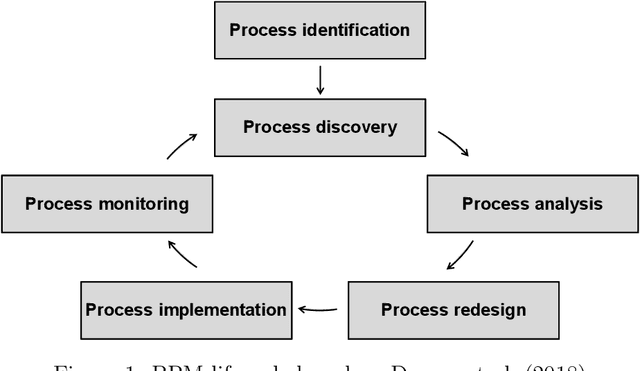

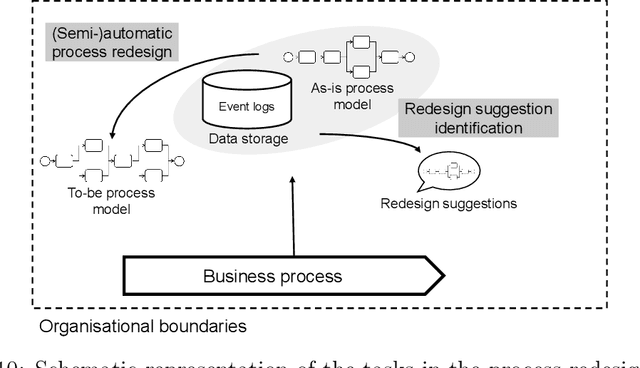
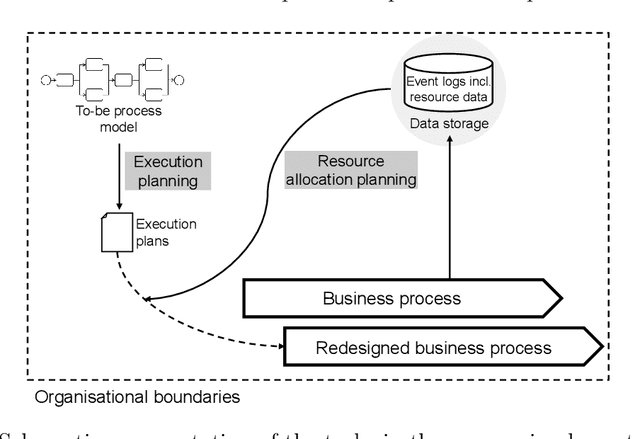
Abstract:Machine learning (ML) provides algorithms to create computer programs based on data without explicitly programming them. In business process management (BPM), ML applications are used to analyse and improve processes efficiently. Three frequent examples of using ML are providing decision support through predictions, discovering accurate process models, and improving resource allocation. This paper organises the body of knowledge on ML in BPM. We extract BPM tasks from different literature streams, summarise them under the phases of a process`s lifecycle, explain how ML helps perform these tasks and identify technical commonalities in ML implementations across tasks. This study is the first exhaustive review of how ML has been used in BPM. We hope that it can open the door for a new era of cumulative research by helping researchers to identify relevant preliminary work and then combine and further develop existing approaches in a focused fashion. Our paper helps managers and consultants to find ML applications that are relevant in the current project phase of a BPM initiative, like redesigning a business process. We also offer - as a synthesis of our review - a research agenda that spreads ten avenues for future research, including applying novel ML concepts like federated learning, addressing less regarded BPM lifecycle phases like process identification, and delivering ML applications with a focus on end-users.
Time Matters: Time-Aware LSTMs for Predictive Business Process Monitoring
Oct 16, 2020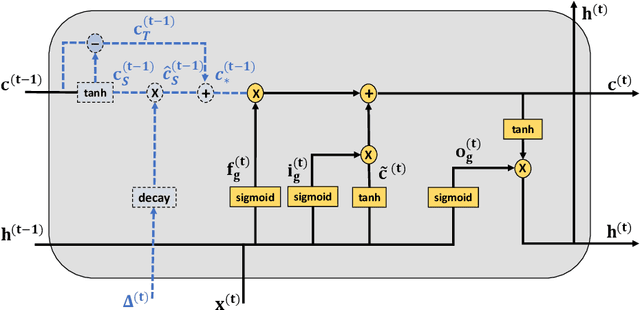
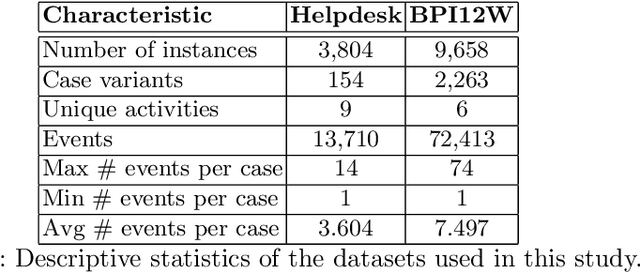
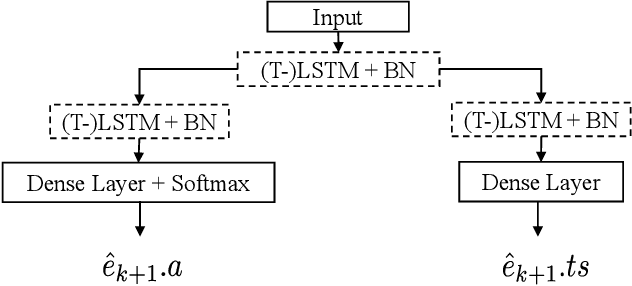

Abstract:Predictive business process monitoring (PBPM) aims to predict future process behavior during ongoing process executions based on event log data. Especially, techniques for the next activity and timestamp prediction can help to improve the performance of operational business processes. Recently, many PBPM solutions based on deep learning were proposed by researchers. Due to the sequential nature of event log data, a common choice is to apply recurrent neural networks with long short-term memory (LSTM) cells. We argue, that the elapsed time between events is informative. However, current PBPM techniques mainly use 'vanilla' LSTM cells and hand-crafted time-related control flow features. To better model the time dependencies between events, we propose a new PBPM technique based on time-aware LSTM (T-LSTM) cells. T-LSTM cells incorporate the elapsed time between consecutive events inherently to adjust the cell memory. Furthermore, we introduce cost-sensitive learning to account for the common class imbalance in event logs. Our experiments on publicly available benchmark event logs indicate the effectiveness of the introduced techniques.
Prescriptive Business Process Monitoring for Recommending Next Best Actions
Aug 19, 2020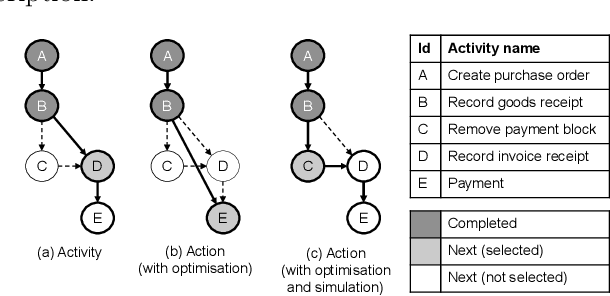
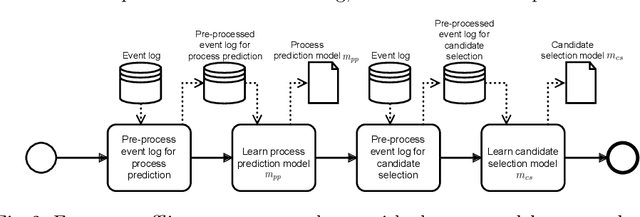

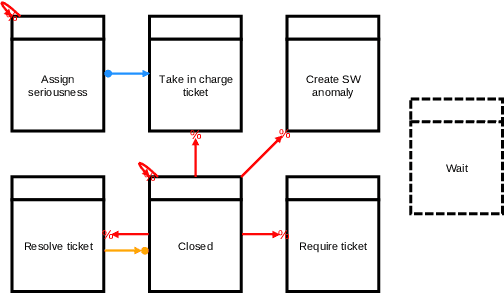
Abstract:Predictive business process monitoring (PBPM) techniques predict future process behaviour based on historical event log data to improve operational business processes. Concerning the next activity prediction, recent PBPM techniques use state-of-the-art deep neural networks (DNNs) to learn predictive models for producing more accurate predictions in running process instances. Even though organisations measure process performance by key performance indicators (KPIs), the DNN`s learning procedure is not directly affected by them. Therefore, the resulting next most likely activity predictions can be less beneficial in practice. Prescriptive business process monitoring (PrBPM) approaches assess predictions regarding their impact on the process performance (typically measured by KPIs) to prevent undesired process activities by raising alarms or recommending actions. However, none of these approaches recommends actual process activities as actions that are optimised according to a given KPI. We present a PrBPM technique that transforms the next most likely activities into the next best actions regarding a given KPI. Thereby, our technique uses business process simulation to ensure the control-flow conformance of the recommended actions. Based on our evaluation with two real-life event logs, we show that our technique`s next best actions can outperform next activity predictions regarding the optimisation of a KPI and the distance from the actual process instances.
XNAP: Making LSTM-based Next Activity Predictions Explainable by Using LRP
Aug 18, 2020



Abstract:Predictive business process monitoring (PBPM) is a class of techniques designed to predict behaviour, such as next activities, in running traces. PBPM techniques aim to improve process performance by providing predictions to process analysts, supporting them in their decision making. However, the PBPM techniques` limited predictive quality was considered as the essential obstacle for establishing such techniques in practice. With the use of deep neural networks (DNNs), the techniques` predictive quality could be improved for tasks like the next activity prediction. While DNNs achieve a promising predictive quality, they still lack comprehensibility due to their hierarchical approach of learning representations. Nevertheless, process analysts need to comprehend the cause of a prediction to identify intervention mechanisms that might affect the decision making to secure process performance. In this paper, we propose XNAP, the first explainable, DNN-based PBPM technique for the next activity prediction. XNAP integrates a layer-wise relevance propagation method from the field of explainable artificial intelligence to make predictions of a long short-term memory DNN explainable by providing relevance values for activities. We show the benefit of our approach through two real-life event logs.
A Technique for Determining Relevance Scores of Process Activities using Graph-based Neural Networks
Aug 07, 2020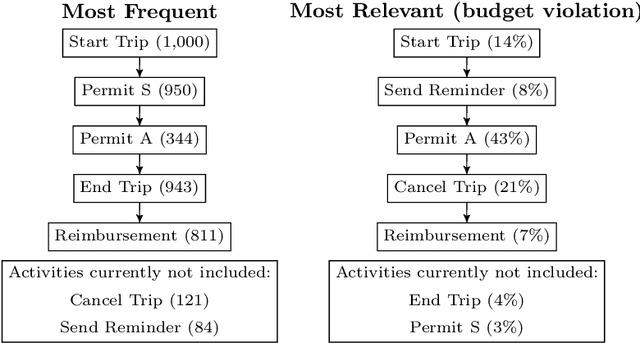
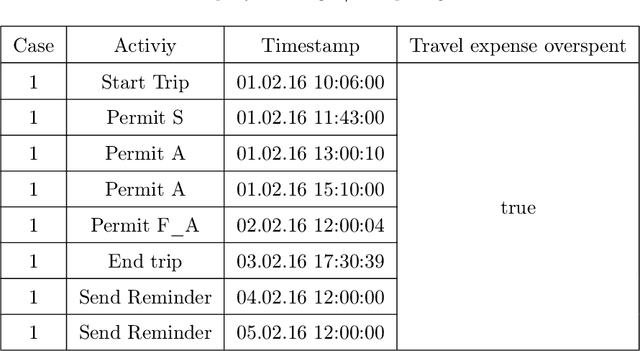


Abstract:Process models generated through process mining depict the as-is state of a process. Through annotations with metrics such as the frequency or duration of activities, these models provide generic information to the process analyst. To improve business processes with respect to performance measures, process analysts require further guidance from the process model. In this study, we design Graph Relevance Miner (GRM), a technique based on graph neural networks, to determine the relevance scores for process activities with respect to performance measures. Annotating process models with such relevance scores facilitates a problem-focused analysis of the business process, placing these problems at the centre of the analysis. We quantitatively evaluate the predictive quality of our technique using four datasets from different domains, to demonstrate the faithfulness of the relevance scores. Furthermore, we present the results of a case study, which highlight the utility of the technique for organisations. Our work has important implications both for research and business applications, because process model-based analyses feature shortcomings that need to be urgently addressed to realise successful process mining at an enterprise level.
Cause vs. Effect in Context-Sensitive Prediction of Business Process Instances
Jul 15, 2020
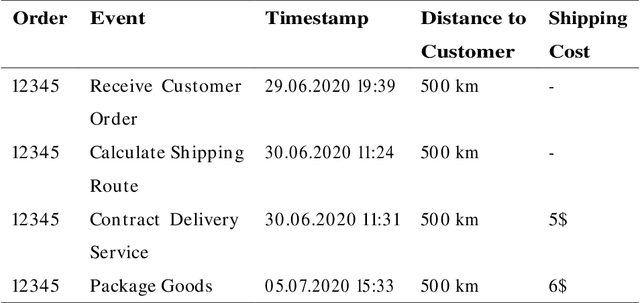
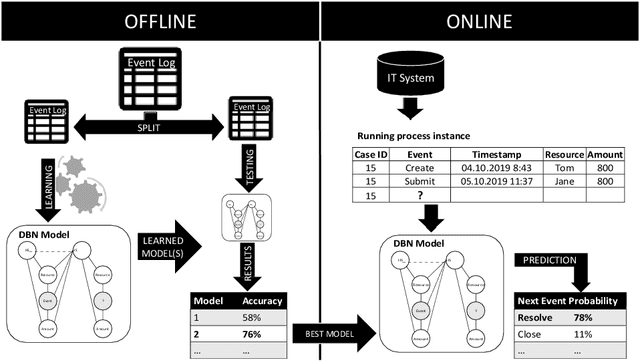

Abstract:Predicting undesirable events during the execution of a business process instance provides the process participants with an opportunity to intervene and keep the process aligned with its goals. Few approaches for tackling this challenge consider a multi-perspective view, where the flow perspective of the process is combined with its surrounding context. Given the many sources of data in today's world, context can vary widely and have various meanings. This paper addresses the issue of context being cause or effect of the next event and its impact on next event prediction. We leverage previous work on probabilistic models to develop a Dynamic Bayesian Network technique. Probabilistic models are considered comprehensible and they allow the end-user and his or her understanding of the domain to be involved in the prediction. Our technique models context attributes that have either a cause or effect relationship towards the event. We evaluate our technique with two real-life data sets and benchmark it with other techniques from the field of predictive process monitoring. The results show that our solution achieves superior prediction results if context information is correctly introduced into the model.
 Add to Chrome
Add to Chrome Add to Firefox
Add to Firefox Add to Edge
Add to Edge